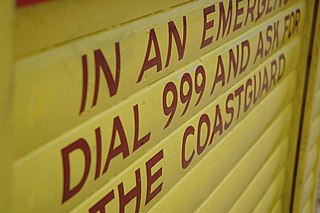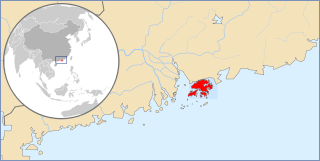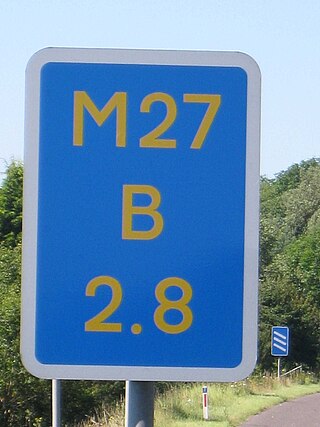
A hotline is a point-to-point communications link in which a call is automatically directed to the preselected destination without any additional action by the user when the end instrument goes off-hook. An example would be a phone that automatically connects to emergency services on picking up the receiver. Therefore, dedicated hotline phones do not need a rotary dial or keypad. A hotline can also be called an automatic signaling, ringdown, or off-hook service.

999 is an official emergency telephone number in a number of countries which allows the caller to contact emergency services for emergency assistance. Countries and territories using the number include Bahrain, Bangladesh, Botswana, Eswatini, Ghana, Guernsey, Hong Kong, the Republic of Ireland, the Isle of Man, Jersey, Kenya, Macau, Malaysia, Mauritius, Poland, Qatar, Sudan, Saudi Arabia, Singapore, Trinidad and Tobago, Seychelles, Uganda, the United Arab Emirates, the United Kingdom, and Zimbabwe.
Premium-rate telephone numbers are telephone numbers that charge callers higher price rates for select services, including information and entertainment. A portion of the call fees is paid to the service provider, allowing premium calls to be an additional source of revenue for businesses. Tech support, psychic hotlines, and adult chat lines are among the most popular kinds of premium-rate phone services. Other services include directory enquiries, weather forecasts, competitions and ratings televoting. Some businesses, e.g. low-cost airlines, and diplomatic missions, such as the US Embassy in London or the UK Embassy in Washington, have also used premium-rate phone numbers for calls from the general public.
A toll-free telephone number or freephone number is a telephone number that is billed for all arriving calls. For the calling party, a call to a toll-free number from a landline is free of charge. A toll-free number is identified by a dialing prefix similar to an area code. The specific service access varies by country.

A call box or callbox is a box containing a special-purpose direct line telephone or other telecommunications device which has been used by various industries and institutions as a way for employees or clients at a remote location to contact a central dispatch office.

5-1-1 is a transportation and traffic information telephone hotline in some regions of the United States and Canada. Travelers can dial 511, a three-digit telephone number, on landlines and most mobile phones. The number has also extended to be the default name of many state and provincial transportation department road conditions Web sites, such as Wisconsin's site. It is an example of an N11 code, part of the North American Numbering Plan.

In the United Kingdom, telephone numbers are administered by the Office of Communications (Ofcom). For this purpose, Ofcom established a telephone numbering plan, known as the National Telephone Numbering Plan, which is the system for assigning telephone numbers to subscriber stations.
National Highways (NH), formerly the Highways Agency and later Highways England, is a government-owned company charged with operating, maintaining and improving motorways and major A roads in England. It also sets highways standards used by all four UK administrations, through the Design Manual for Roads and Bridges. Within England, it operates information services through the provision of on-road signage and its Traffic England website, provides traffic officers to deal with incidents on its network, and manages the delivery of improvement schemes to the network.
NHS Direct was the health advice and information service provided by the National Health Service (NHS), established in March 1998. The nurse-led telephone information service provided residents and visitors in England with healthcare advice 24 hours a day, every day of the year through telephone contact on the national non-geographic 0845 46 47 number. The programme also provided a web based symptom checkers on the NHS Direct website and via mobile, both as apps for iPhone and Android smart phones and a mobile website.

Roadworks occur when part of the road, or in rare cases, the entire road, has to be occupied for work relating to the road, most often in the case of road surface repairs. In the United States road work could also mean any work conducted in close proximity of travel way (thoroughfare) such as utility work or work on power lines. The general term of road work is known as work zone.

Telephone numbers in Hong Kong are mostly eight-digit. Fixed land line numbers start with 2 or 3, mobile (cellular) phone numbers with 5, 6, 7 or 9, pager numbers with 7 and forwarding service with 8. Since the end of 1989, there have been no area codes within Hong Kong.
Abbreviated dialing is the use of a very short digit sequence to reach specific telephone numbers, such as those of public services. The purpose of such numbers is to be universal, short, and easy to remember. Typically they are two or three digits.

Road signs in the United Kingdom and in its associated Crown dependencies and overseas territories conform broadly to European design norms, though a number of signs are unique: direction signs omit European route numbers and road signs generally use the Imperial System of units, unlike the rest of Europe. Signs in Wales and parts of Scotland are bilingual.

saynoto0870.com is a UK website with a directory of non-geographic telephone numbers and their geographic alternatives.
The Brazilian telephone numbering plan uses a two-digit area code plus eight-digit local phone numbers for landlines and nine digits for mobile lines. Public utility services use short phone numbers, always starting with 1.

Road traffic control involves directing vehicular and pedestrian traffic around a construction zone, accident or other road disruption, thus ensuring the safety of emergency response teams, construction workers and the general public.
A non-geographic number is a type of telephone number that is not linked to any specific locality. Such numbers are an alternative to the traditional 'landline' numbers that are assigned geographically using a system of location-specific area codes. Non-geographic numbers are used for various reasons, from providing flexible routing of incoming phone calls to generating revenue for paid-for services.

An advisory speed limit is a speed recommendation by a governing body, used when it may be non-obvious to the driver that the safe speed is below the legal speed. It is a posting which either approximates the Basic Speed Law or rule or is based on a maximum g-force exerted at a specific speed. Advisory speed limits are often set in areas with many pedestrians, such as in city centres and outside schools, and on difficult stretches of roads, such as on tight corners or through roadworks. While travelling above the advisory speed limit is not illegal per se, it may be negligence per se and liability for any collisions that occur as a result of traveling above the limit can be placed partially or entirely on the person exceeding the advisory speed limit.

Driver location signs are signs placed every 500 metres (550 yd) along each side of English motorways, and some other major English roads, to provide information that will allow motorists to know their precise location. As of July 2009, roads in England, but not Scotland, Wales or Northern Ireland, have these signs. This information might be useful in the event of an emergency or breakdown. They were first introduced in 2003, and they complement distance marker posts. Both types of sign display a unique location number. The number, although given without units, is the distance in kilometres from a designated datum location for the road, although signs meant for driver navigation are in miles.
111 is a free-to-call single non-emergency number medical helpline operating in England, Scotland and Wales. The 111 phone service has replaced the various non-geographic 0845 rate numbers and is part of each country's National Health Service: in England the service is known as NHS 111; in Scotland, NHS 24; and in Wales, NHS111 Wales.













